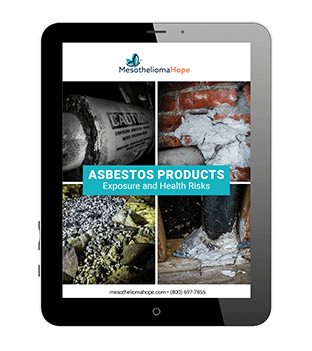In very rare cases, mesothelioma can be inherited through a mutation of the BAP1 gene, which can make mesothelioma development more likely. That said, the most common way of developing mesothelioma is through asbestos exposure. If you believe you may have been exposed to asbestos at work, home, school, or in the military, talk to your doctor as soon as possible.
How People Inherit Mesothelioma
Mesothelioma isn’t generally thought of as being an inheritable disease — but scientists and researchers have actually discovered that it is possible to inherit mesothelioma. This process can occur through the mutation of the BAP1 gene, which makes it more likely that a person will develop mesothelioma in their lifetime.
While it is important to be aware of the BAP1 gene and its potential mutation, it is also important to note that most people who develop mesothelioma do because of exposure to asbestos.
If asbestos fibers are inhaled or swallowed, they remain in the body for decades and are unable to be removed. These fibers irritate healthy tissue and can eventually cause tumors to form.
Even if you were not directly exposed to asbestos, you can still develop mesothelioma after secondhand exposure. There are several cases of family members who worked around asbestos and unknowingly brought the fibers home to their family members. After several years, it’s possible for those family members to develop mesothelioma due to asbestos inhalation.
Mutation of BAP1 Gene Can Increase Mesothelioma Risk
Research has found that mutations in the BAP1 gene are responsible for increased overall cancer risk, not just for mesothelioma. So if an individual has the BAP1 gene mutation, they may be at risk for the development of other forms of cancer as well.
“About 1% of people with mesothelioma have inherited mesothelioma, meaning the risk of developing the disease was passed from parent to child within a family. Usually, it is due to a mutation or change in a gene called BAP1.”
– American Society of Clinical Oncology (ASCO)
At the present moment, genetic links between mesothelioma cancer and gene mutations are still being investigated by researchers. More information is needed to explain how and why the BAP1 gene mutation affects mesothelioma development.
Secondhand Asbestos Exposure and Mesothelioma
Family history still plays a role in the development of mesothelioma because between the 1930s and early 1980s, millions of workers unknowingly put their families at risk. The real culprit was the manufacturers of asbestos-based goods who hid the deadly truth about their products.
Parents who worked as electricians or in the construction field — among dozens of other jobs that came with the risk of asbestos exposure — may bring asbestos fibers back into their homes via their clothes, hair, skin, and equipment.
If your parents or other family members worked with asbestos on a regular basis and later developed mesothelioma, you may also be at risk of developing the cancer later on.
Secondhand Asbestos Exposure: A Case Study
Julie Gundlach is an example of an individual who suffered from secondary asbestos exposure. Her father worked as a commercial electrician in St. Louis for 40 years, tracking asbestos fibers home with him on his clothes. What’s more, Julie’s father often did his laundry next to Julie’s play area as a child.
Later, doctors found out that the mass in Julie’s abdomen was actually mesothelioma caused by asbestos exposure. Julie never worked around asbestos but was still at risk because of secondhand exposure. As of 2020, however, Julie has fought and survived her cancer for over a decade.
Action Steps for Those at Risk of Inheriting Mesothelioma
If you believe that you or a loved one is at risk of inheriting mesothelioma, whether through a genetic mutation or through secondhand exposure, talk to a medical professional. A doctor can help you get tested for the BAP1 gene mutation and determine if you are at higher risk of developing mesothelioma.
You should also tell your doctor if you have lived or worked around asbestos. A doctor can better assess your risk and help you figure out if you may have had secondhand exposure.
You should also see a doctor if you start to develop any warning signs of mesothelioma, such as a dry cough, shortness of breath, or loss of appetite. Early detection and treatment can greatly improve your prognosis.
Learn More About Inheriting Mesothelioma & Your Options
Inheriting mesothelioma is rare, but it is a possibility that everyone should be aware of. If you believe that you or a loved one is at risk, know that there is help available.
Our team of Patient Advocates can help you determine how you may have been exposed to asbestos, find the best treatment options for your case, and afford the expenses that come with a cancer diagnosis. Contact us today.










